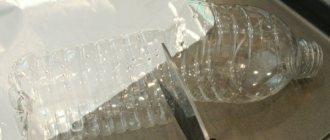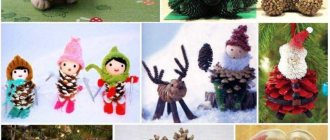How to organize a story about clothes for children
Involving your child in a shared story about clothing is the best method of learning information and a good option for spending time with an adult. Starting with the prehistoric life of people, think with your child about what kind of clothes a person could wear in a particular period of time. In this way, it will be possible to reproduce the history of clothing for children.
Prepare in advance:
Presentation materials are listed below.
The first fabrics from different countries
The first tissues that man mastered were:
Silk was first produced in China. It is unknown where linen was first created. Clothes made from it were worn in Ancient Egypt and the Middle East. Cotton threads were first learned to be produced in India, and wool began to be produced simultaneously in China and Babylon.
Cultivation of flax in ancient Egypt
At first they were made by hand, and then using special machines.
XVI-XIX centuries
People design clothes to decorate themselves.
In Europe, they came up with a special frame, over which a skirt was put on, and the waist was very tightly compressed by the corset. Often women wearing such clothes fainted. There was a fashion for high hairstyles. They were worn by both women and men. Sometimes hairdressers built entire ships or flowerpots on their heads.
Invite your child to try a large soft toy on his head and try to keep its balance.
Since the end of the 19th century, clothing has become less voluminous and more sophisticated. Women wear fitted, elegant dresses, and men wear long tailcoats and tall hats - top hats. Later they begin to produce, first of all, comfortable clothes. Women start wearing trousers.
Primitive society
Nowadays people often choose clothes that look more beautiful, while we have the opportunity to make clothes comfortable. But primitive people thought about how to protect themselves from the cold.
Caveman
Ask your child a question: what clothes might a caveman choose? At that time there were no tools, fabrics or threads, and people did not yet know how to sew. The appearance of the first clothes can be roughly divided into stages:
The first primitive clothing was in the form of a rectangular piece of skin or intertwined plants. They were thrown over the hips or wrapped around the body. Invite your child to wrap himself in a blanket or wide shawl.
A little later, stone needles appeared, with which people could sew together several pieces of skin.
The tale of how a shirt grew from flax
Flax grows in the north and in temperate climates; it does not need much sun and water. He will wait for the rain without whims.
What is linen thread made from?
The seeds germinate and a panicle appears on the stem. A soft tissue called bast forms inside the trunk. This part is very flexible and durable, which is why it is used for thread.
How is flax collected and processed?
Threads will only be obtained from flax that has not had time to ripen. Therefore, people came up with the idea of pulling out the stems ahead of time and leaving them on the ground for a couple of weeks. During this time, the seeds ripen, and the bast remains as soft and plastic.
A special machine knocks the grains out of the panicles, otherwise called “threshing”. And the remaining stems are left to soak in the rain or thrown into water. This is done so that bacteria will appear in them, which will help hold the fibers together. They eat all the glue that is released from the water on the stems.
Now the flax needs to be dried and this is done in special crushing machines that crumple it. In this case, the bast is separated from the stem. In order to obtain thin fibers, the bast needs to be tousled. The machine that helps do this is called a scutcher.
Threads will be spun from the resulting fibers, and fabrics will be made from the threads at the weaving factory.
A little imagination of an adult and a story about clothes will turn out to be fascinating and will be remembered by the child for the rest of his life.
Source
Ancient world
Over time, people learned to spin and make fabrics from plant fibers and wool. The style of clothing became more complex and changed depending on the climate where the person lived. Men and women dressed similarly. Both wore something similar to a cloak or dress, only the length differed.
In Ancient Greece, everyone dressed in a tunic, over which they tied a fabric, grabbing it on one shoulder.
Greek tunic Chiton
In Ancient Rus', men wore shirts and ports (wide trousers). The shirt was slightly above the knees and was tied with a thin belt. Women wore a long shirt reaching to their toes, an apron or a belt. This is how the peasants dressed, they sewed all their clothes themselves from flax, and then they always embroidered patterns on them, often in red. Noble people wore silk outfits. Materials were brought from other countries by merchants.
Prepare in advance templates in the form of a man and a woman and a separate shirt: one for the height of a paper doll, the second shorter for a man. Invite your child to draw a pattern on the clothing with a red felt-tip pen, imagining that they are embroidering it.
First clothes: fairy tales and stories that will introduce a child to the history of clothing
People started wearing clothes a long time ago. From those times to the present day, its appearance has changed many times. This happened due to the development of traditions, climate changes and much more.
The type of clothes we wear now has changed many times, because people started wearing clothes a long time ago. Traditions, climatic conditions and much more changed, all this affected the clothes of our ancestors. Studying clothing is always fascinating. The history of clothing for children can reveal to kids many interesting facts about the habits and lifestyle of our ancestors.
"What's more important?" A fairy tale for kids on the topic “Clothes and shoes”
Natalia Dementieva
"What's more important?" A fairy tale for kids on the topic “Clothes and shoes”
There was a child's dress and shoes. For a long time they had been arguing among themselves about who was more beautiful and more useful to the girl Masha.
They would have been arguing until now, but then Mashenka woke up. She got up from her crib, stretched and began to put on her dress, saying: “Today in kindergarten I will be the most beautiful, because I have such a magnificent dress!”
-Here you go! I told you that he is more important and more beautiful than you ! - the dress said to the shoes .
And suddenly the girl went to the mirror, looked at herself and thought:
- No, I won’t be beautiful in just a dress... But I’ll put on these wonderful shoes. They are very comfortable and complement my outfit perfectly.
And Mashenka, putting on her shoes and dress, pleased with herself and her beauty, went with her mother to kindergarten.
Didactic games for preschool children on the topic “Clothes, shoes, hats” Municipal budgetary preschool educational institution kindergarten “Baby”. Didactic games for preschool children.
Calendar plan on the topic “Clothes, shoes, hats” (preparatory group) Topic of the week: “Clothes, shoes, hats, atelier. Goal: to reinforce with children the names of clothes for different seasons of the year, hats (how.
Consultation “Clothes and shoes for children on a winter walk” Consultation for parents “Clothes and shoes for a child on a winter walk” Colds are a common occurrence among children attending kindergarten. Often.
GCD for FCCM “Footwear. Cloth. Hats" GCD for FCCM Topic: "Footwear. Cloth. Hats". Goal: 1. to develop the ability to differentiate types of clothing by season; call her.
GCD in a preparatory group for school on the lexical topic “Clothes, shoes, hats” Objectives: 1. Clarify the meaning of the verbs “shoe” and “dress” 2. Develop the ability to compose comparative stories using the conjunction “a”. 3. Fasten.
Speech development. GCD summary on the topic “Clothing, shoes, hats” GCD summary on the topic: “Clothing, shoes, hats.” Program content: Enrich vocabulary on the topic “Clothing”. Develop thinking.
Thematic week “Clothes. Shoes. Hats" Notes on speech development in the senior group "Clothing" Purpose: To familiarize children with the purpose of clothing. Develop the ability to classify types of clothing. Introduce the professions of tailor and knitter. Exercise.
Source

